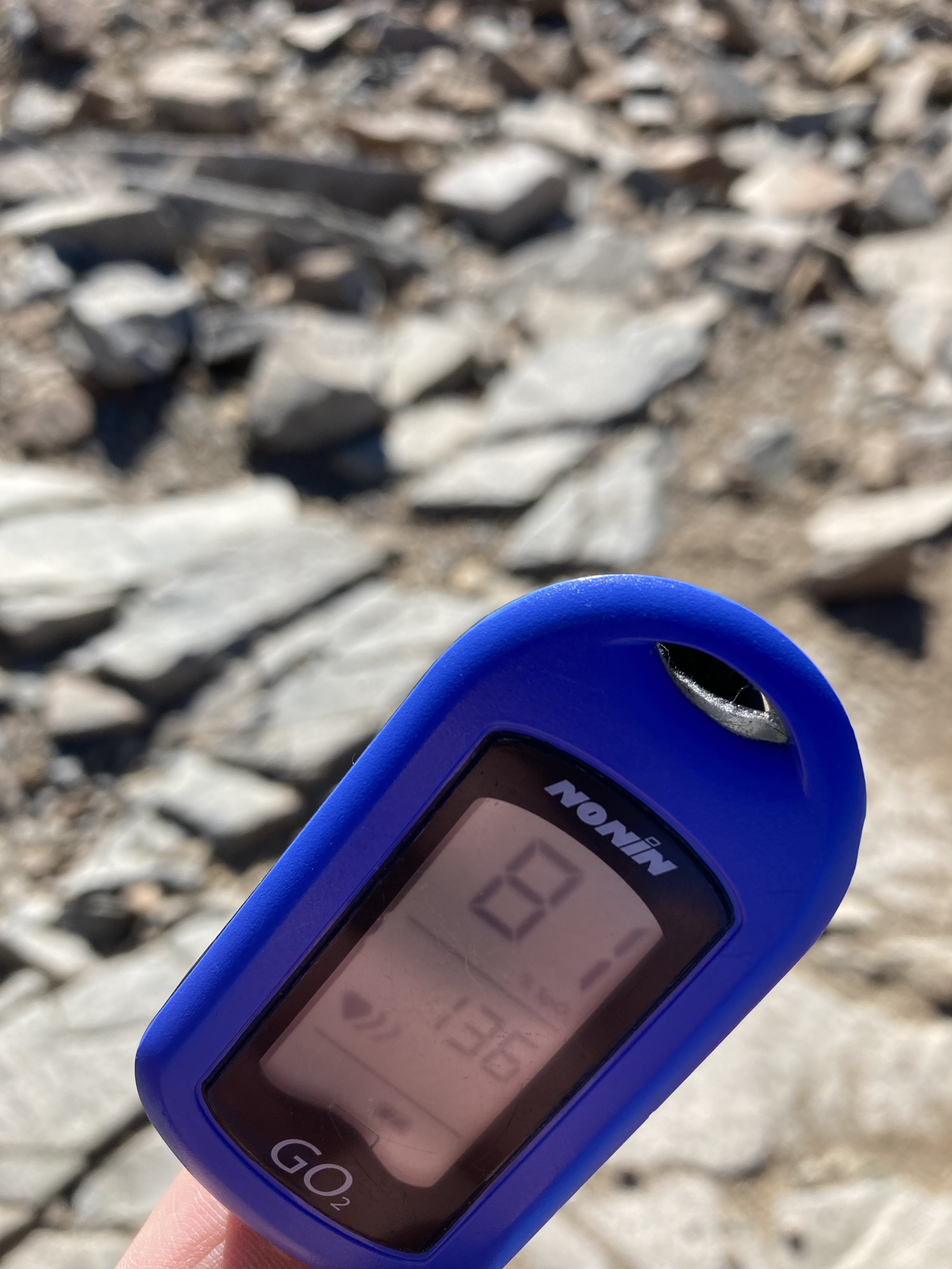As a person with type 1 diabetes, my experience with nasal breathing has been nothing short of miraculous. It's been such a simple change, yet its impacts on my energy and blood sugars have been profound. I feel it would be irresponsible not to share it with other people with diabetes.
Luckily, people much brighter than me have become fascinated by the nose too. Whole books have now been written on the topic. It has been featured in popular sources such as Outside Magazine and the Cleveland Clinic. An article published in Frontiers in Human Neuroscience even concluded that “nasal stimulation represents the fundamental link between slow breathing techniques, brain and autonomic activities and psychological/behavioral outputs.”
But after several years of research, I have come to realize that the reasons nose breathing is so helpful for diabetes go far beyond the “obvious ones.”
Of course, the usual suspects are essential, such as the warming and humidifying of the incoming air and the natural slowing of the breath. But to fully understand the benefits for diabetes requires a synthesis of research from different fields, such as diabetic complications, the metabolites of nitric oxide, chronic stress, and sleep.
Let’s start with diabetic complications.
Oxidative Stress and Inflammation Reduce Blood Flow
Over time, the oxidative stress and chronic inflammation associated with diabetes can damage blood vessels, resulting in poor circulation.
Less blood flow means that less oxygen reaches the cells, tissues, and organs.
As a result of this poor circulation (and other complications), people with diabetes have an increased incidence of retinopathy, kidney disease, and foot problems.
Nose breathing—specifically inhaling through the nose—immediately helps with this. For example, one small study showed that just five minutes of inhaling through the nose and exhaling through the mouth increased tissue oxygenation by 10%. This increase was due to nitric oxide.
Nitric oxide is continuously produced in the paranasal sinuses. When you breathe in through your nose, nitric oxide is carried into the lungs, where it opens up the blood vessels and improves blood flow in the lungs. This results in better gas exchange and better blood oxygenation.
But that’s only the beginning of NO’s benefits.
How Nitric Oxide Helps with Blood Flow and Oxygenation
Typically, the nitric oxide produced in your nose is treated separately from the nitric oxide produced throughout the rest of your body. Although it is known that that inhaling nitric oxide has effects outside of the lungs, scientists have not known how. Researchers at the Cleveland Clinic have recently shed light on the issue.
In a 2019 study, they did something simple yet meaningful. The researchers had participants inhale extra nitric oxide, and they measured what happened in the blood afterward. If nitric oxide’s journey ended in the lungs, they wouldn’t see any signs of it in distant blood samples.
The results showed the opposite.
They found that inhaling nitric oxide significantly increased circulating levels of a specific form of the molecule, SNO-Hb. These findings matter because, in a separate study published in PNAS in 2015, a different group of researchers found that SNO-Hb played an essential role in whole-body oxygenation. Without it, mice received less blood flow to the heart and even had smaller litter sizes.
Why This is Important to Diabetes
The complications of diabetes also impact nitric oxide. Sustained high blood sugars alter how hemoglobin stores nitric oxide.
The end result is that people with diabetes generally have less SNO-Hb.
And, as we just learned, SNO-Hb is critical to blood flow and tissue oxygenation.
So, putting it all together:
People with diabetes suffer from poor circulation and insufficient oxygen.
Our noses are a source of nitric oxide—breathing through our nose utilizes it.
Inhaling nitric oxide increases an essential form of NO called SNO-Hb.
SNO-Hb is critical to improving blood flow and increasing whole-body oxygenation.
Therefore, nose breathing could be especially helpful in diabetes by maintaining normal SNO-Hb levels and hence helping improve blood flow and oxygenation throughout the body.* Mouth breathing would not provide these benefits.
How High Blood Sugars Reduce Oxygen Delivery
In addition to altering how nitric oxide is stored, high blood sugar also modifies the relationship between oxygen and hemoglobin. Specifically, it tightens the bond between them.
As a result, less oxygen can be delivered to the places it is needed. (For the breathing nerds out there, it causes a left shift in the oxyhemoglobin dissociation curve.) This problem might be further exacerbated by stress.
Chronic Stress and Carbon Dioxide Alter Oxygen Availability
Diabetes also causes chronic stress—a less intense but sustained fight or flight stress response. This stress causes people with diabetes to have anywhere from 14% to 20% more cases of anxiety than those without it. Moreover, it has been reported that up to 40% of the diabetic population show symptoms of anxiety. A 2013 meta-analysis, including over 12,000 people with diabetes, also found significant associations between diabetes and an increased probability of anxiety disorder or anxiety symptoms.
Chronic stress and anxiety, such as that experienced in diabetes, are often associated with overbreathing. Overbreathing, or hyperventilation, simply refers to breathing more than your metabolic demands at any given moment, and is often associated with mouth breathing. Consequently, the body gets rid of too much carbon dioxide, which alters the pH of the blood.
This has a similar effect on oxygen and hemoglobin as high blood sugar.
That is, it tightens the bond between them, reducing the amount of oxygen that can be delivered to the cells and tissues (this is known as the Bohr effect).
Together, we see that the high blood sugar and chronic stress associated with diabetes combine to reduce oxygen availability to the cells and tissues.
When we switch to nose breathing, the volume of each breath is naturally reduced. This helps normalize carbon dioxide levels and restore blood pH to normal levels, which will improve oxygen delivery.**
Combining this with the earlier discussion on nitric oxide, we see how this one simple change (nose breathing) helps offset some diabetic complications.
Nose Breathing, Sleep, and Diabetes: The Missing Link to Better Blood Sugar Control
If we breathe nasally during sleep, all of the benefits of nose breathing continue throughout the night. Of all the things nose breathing helps with, this might be the most critical for diabetes.
We have already discussed that diabetes causes chronic stress, which can lead to more rapid breathing. Nose breathing helps naturally slow down the breath. This will help you shift from a stressful sympathetic state to a calming parasympathetic state. This shift is significant for people with diabetes who exhibit less parasympathetic tone at night than non-diabetics. Thus, nasal breathing at night helps us increase parasympathetic tone and enjoy better sleep.
Receptors in your nose also act to maintain rhythmic breathing during sleep. This might help explain why nose breathing reduces the risk of obstructive sleep apnea when compared to mouth breathing. Diabetes is associated with a significantly increased risk of obstructive sleep apnea. So, if nasal breathing at night can help reduce this risk, it could be especially beneficial.
Lastly, we know that inadequate sleep causes insulin resistance. By getting deeper, more restorative sleep, insulin sensitivity can be improved. This could potentially lead to better morning blood sugars (that was my experience), setting you up for a better day of glucose control.
The More Subjective but Most Important Benefit of Nasal Breathing for Diabetes
Altogether, nasal breathing increases blood flow, improves tissue oxygenation, and appears to increase an essential form of bioactive nitric oxide that people with diabetes have less of. It also improves sleep quality by helping us flip to a more calming state and by reducing the incidence of sleep apnea. This can help improve insulin sensitivity.
When we combine all of these together, nasal breathing's net benefit can be simply stated as:
It gives you more energy.
And it’s harder to objectively measure, but perhaps the best aspect of increased energy levels is more motivation to take care of your blood sugars.
Diabetes is an exhausting full-time job that can lead to physical and emotional burnout. Having more energy and enthusiasm to manage the disease could be the most valuable aspect of something as simple as breathing through your nose.
Footnotes:
*The levels of NO inhaled in the 2019 Cleveland Clinic study were greater than those produced in the nose. But, the study validated that there is a mechanism by which NO that is introduced into the lungs can be transported throughout the body as SNO-Hb. Thus, nasal breathing would only act to bring SNO-Hb up to normal physiological levels, whereas mouth breathing would rob the body of this important physiological process.
**This discussion is centered around the regular blood sugar fluctuations associated with diabetes and not diabetic ketoacidosis.









